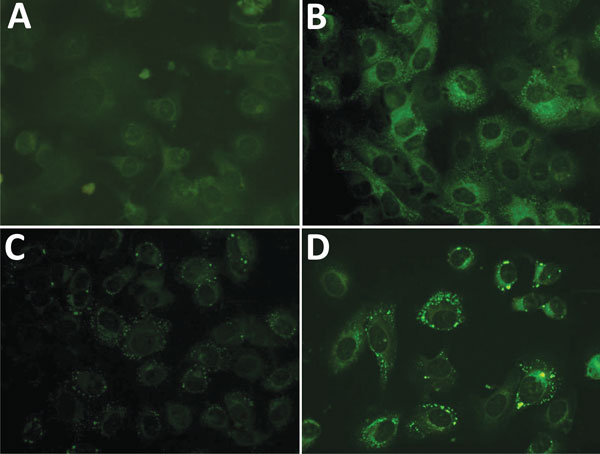Volume 24, Number 5—May 2018
Dispatch
Seroprevalence of Severe Fever with Thrombocytopenia Syndrome Virus Antibodies in Rural Areas, South Korea
Figure 2

Figure 2. Representative indirect immunofluorescent assays of Vero E6 cells infected with thrombocytopenia syndrome virus from patients in rural areas, South Korea. Indirect immunofluorescent assays were conducted by using serially diluted patient serum as primary antibody and fluorescein isothiocyanate–conjugated antihuman IgG as secondary antibody. A) H1 serum (negative, dilution 1:32, IgG titer <1:32); B) B321 serum (positive, dilution 1:64, IgG titer 1:512); C) H214 serum (positive, dilution 1:32, IgG titer 1:128); D) D127 serum (positive, dilution 1:32, IgG titer 1:256). Original magnification x400.
1These authors contributed equally to this article.
Page created: April 17, 2018
Page updated: April 17, 2018
Page reviewed: April 17, 2018
The conclusions, findings, and opinions expressed by authors contributing to this journal do not necessarily reflect the official position of the U.S. Department of Health and Human Services, the Public Health Service, the Centers for Disease Control and Prevention, or the authors' affiliated institutions. Use of trade names is for identification only and does not imply endorsement by any of the groups named above.